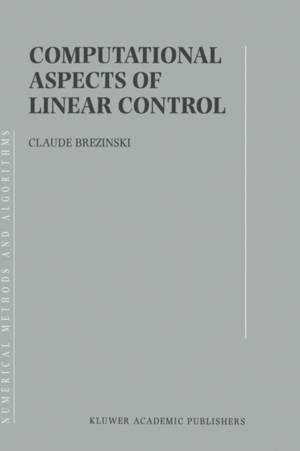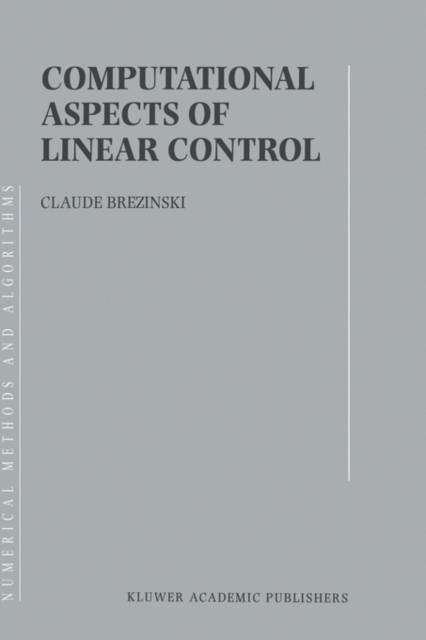
- Afhalen na 1 uur in een winkel met voorraad
- Gratis thuislevering in België vanaf € 30
- Ruim aanbod met 7 miljoen producten
- Afhalen na 1 uur in een winkel met voorraad
- Gratis thuislevering in België vanaf € 30
- Ruim aanbod met 7 miljoen producten
Zoeken
Omschrijving
Many devices (we say dynamical systems or simply systems) behave like black boxes: they receive an input, this input is transformed following some laws (usually a differential equation) and an output is observed. The problem is to regulate the input in order to control the output, that is for obtaining a desired output. Such a mechanism, where the input is modified according to the output measured, is called feedback. The study and design of such automatic processes is called control theory. As we will see, the term system embraces any device and control theory has a wide variety of applications in the real world. Control theory is an interdisci- plinary domain at the junction of differential and difference equations, system theory and statistics. Moreover, the solution of a control problem involves many topics of numerical analysis and leads to many interesting computational problems: linear algebra (QR, SVD, projections, Schur complement, structured matrices, localization of eigenvalues, computation of the rank, Jordan normal form, Sylvester and other equations, systems of linear equations, regulariza- tion, etc), root localization for polynomials, inversion of the Laplace transform, computation of the matrix exponential, approximation theory (orthogonal poly- nomials, Pad6 approximation, continued fractions and linear fractional transfor- mations), optimization, least squares, dynamic programming, etc. So, control theory is also a. good excuse for presenting various (sometimes unrelated) issues of numerical analysis and the procedures for their solution. This book is not a book on control.
Specificaties
Betrokkenen
- Auteur(s):
- Uitgeverij:
Inhoud
- Aantal bladzijden:
- 295
- Taal:
- Engels
- Reeks:
- Reeksnummer:
- nr. 1
Eigenschappen
- Productcode (EAN):
- 9781402007118
- Verschijningsdatum:
- 30/06/2002
- Uitvoering:
- Hardcover
- Formaat:
- Genaaid
- Afmetingen:
- 180 mm x 238 mm
- Gewicht:
- 625 g

Alleen bij Standaard Boekhandel
+ 335 punten op je klantenkaart van Standaard Boekhandel
Beoordelingen
We publiceren alleen reviews die voldoen aan de voorwaarden voor reviews. Bekijk onze voorwaarden voor reviews.











